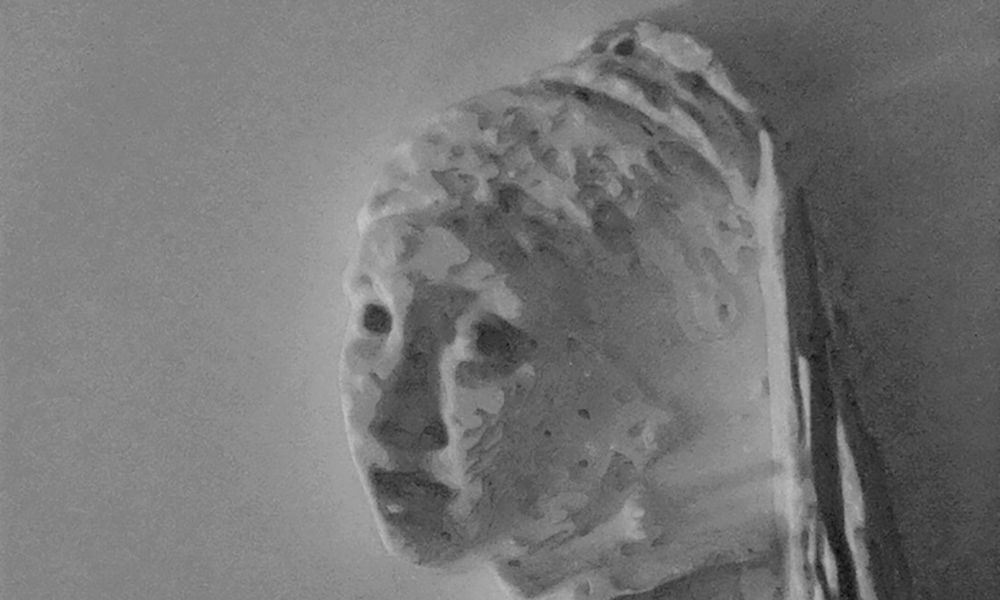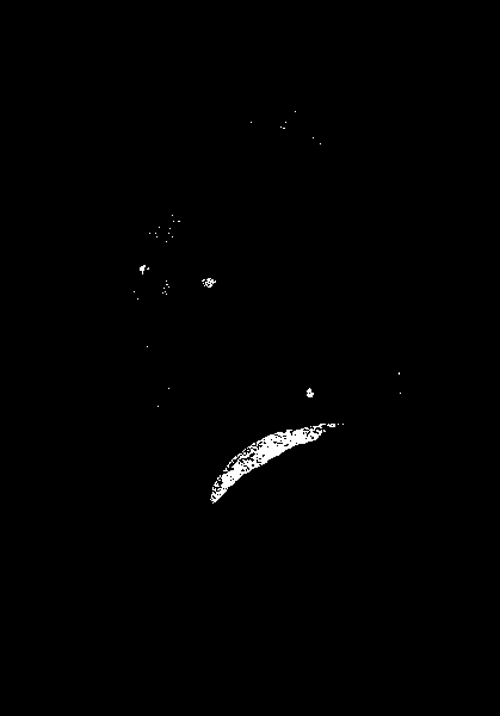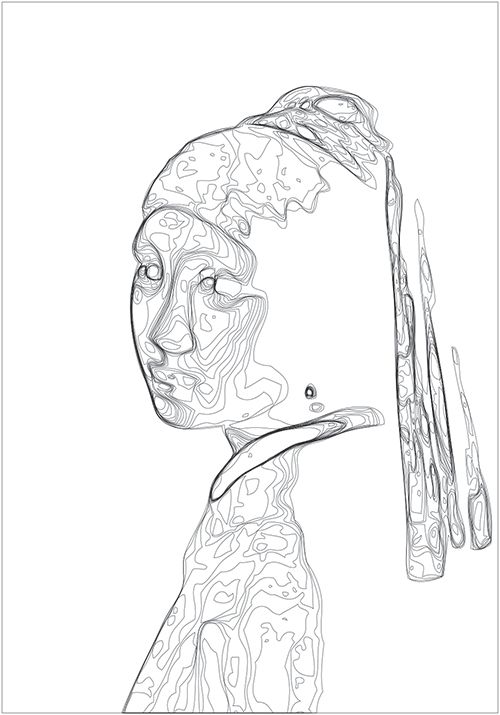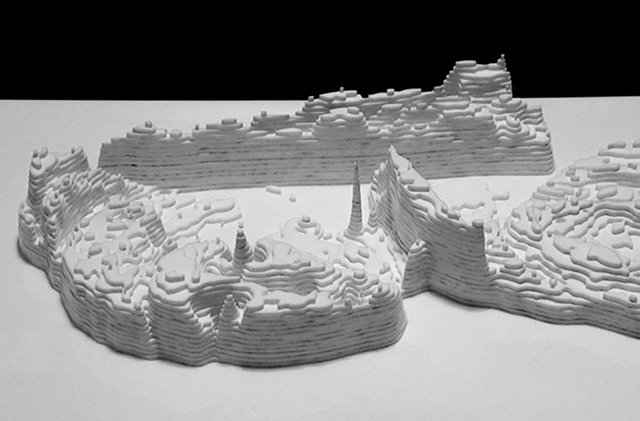Double Take: Discovering the Hidden Landscape within Girl with a Pearl Earring

Girl with a Giant Canyon for a Face
In 2011 I presented a solo exhibition called DOUBLE TAKE in which I explored the possibilities of creating and discovering new worlds hidden within well-known imagery. In one of my original works, I derived a landscape topography from the famous Girl with a Pearl Earring painting, built the topography using lasercut plexiglass, and then created a hand-drawing of the landscape. When viewed from above the girl's features are clearly visible, but from all other angles the viewers are afforded a completely new relationship with the image they've seen countless times before.
_-_The_Girl_With_The_Pearl_Earring_(1665).jpg)


plexiglass acrylic

pencil and ink on paper
Exhibition Concept:
Visitors to the exhibition were presented with the following blurb upon entry:
The Mona Lisa lies flat below your feet, the size of a football field. As you walk the fifty yards up her torso, her legendary smile is lost within your ground-level view. An image of iconic status can be increasingly manipulated in color, scale, material and orientation, but still it remains recognizable – that is, until an unexpected moment of lost familiarity and intense reinterpretation. It is at this moment that I present to you: the double take.
Found at the unstable line between two-dimensional and three-dimensional representation, we find endless possibilities for creating originality through perceptual transformation. Unknown worlds begin to emerge within the most well known imagery. This same stubborn line separates an architectural plan from its seemingly unreachable three-dimensional product, and applying this notion to iconic works of two-dimensional art adds new levels of both literal and abstract depth to the works. With the sudden ability to participate in what was once a mutually exclusive relationship, the spectator takes on the role of the settler. As we know her, Mona Lisa is not a woman, she is a painting. As soon as she turns her head, uncharted territory manifests.
How did I make this?
The process for creating the topography was based on one understanding: the darkest portions of the painting should be the valleys and the lightest portions should be the mountains. That way the darkest portions (her pupils, her back, the right side of her face) would be the parts of the landscape with the deepest darkest shadows, while the lightest portions (the earring, the whites of her eyes, the left side of her face) would catch the most light.

I derived the layers of the topography by taking the painting into photoshop, converting it to black and white, and then gradually adjusting the “Threshold” levels. In this way I was able to tease out eighteen layers which start with the lightest portions as the top layer of the topo, gradually getting darker and darker as the layers get lower and lower.

These eighteen layers were then taken into Illustrator and “Image Traced” in order to get the outlines. The next and last step was sending those outlines to the laser cutter and glueing the twenty layers together by hand, one piece at a time!

One of my favorite parts about this particular sculpture (a happy accident that came out of the methodology) is that the pearl earring itself ends up being the most interesting part of the landscape. Since the earring is a flash of light surrounded by darkness in the painting, its form in the topography ended up being a giant spire towering into the air. It brought back memories of my trip to Bryce Canyon National Park - a seemingly alien landscape filled with geological spires called hoodoos. Perhaps Bryce Canyon is really just a three dimensional transformation of a two-dimensional image. Is this how extraterrestrials are trying to communicate with us??

Thanks for reading! This sculpture/drawing was one in a series of five. To see another part of the series, check out my original post about my Mona Lisa sculpture.

This post has received gratitude of 1.00 % from @jout
Thanks @jout!
You got a 0.27% upvote from @postpromoter courtesy of @jout!
Wow! That's a fascinating process... and transformation... of this iconic image. I went back over it a couple of times just to check the process again... really cool, AND well thought up!
Thanks @reddragonfly! And thanks for reading through :)
Amazing interpretation through an unusual media technique. I'd have never thought to manipulate a two dimensional image in this fashion. GREAT work.
Thanks very much @nytowl, glad you liked it!
das dope
Much appreciated my friend
At risk of sounding like a "nice post. Following you. Good luck" kinda comment...
...this is really stunning, from concept to deliverable.
I'm having a hard time keeping on top of other @sndbox fellows, but I was at least already following you! Now I've got my eyes peeled for your content and set an alert on Steemify. Grateful that you were brought to my attention in today's upvotes of the week. -brian aka @spectrums
Thanks so much @spectrums! Really appreciate you taking the time to read through. Looking forward to following along with your posts as well.
I think it’s a great concept and pushes the boundaries of perception. You could be right inside that landscape and not know you are about to enter into a nostril. Joking aside I like transformations like that - would be cool to try this with music. E.g convert the topography to sounds either through pixel by pixel analysis and then converting into notes on a scale or by using the landscape as multiple waveforms within a synth. Not sure how I could do it as I don’t have the scripting skills to write the programme but could create a descriptive algorithm that gives the tasks that need to be done. Great blog post and amazing to see so much talent.
Thanks for the comment voxxov! I would love to see this sort of idea applied to other mediums. I can definitely imagine the wave form of a song being converted into a landscape somehow. That would be an amazing way to appreciate music! Similar to those music visualization applications from years ago, but in 3d...
Wow!!! It's really cool to be able to see your proces from up close :-) Both process and result are amazing!